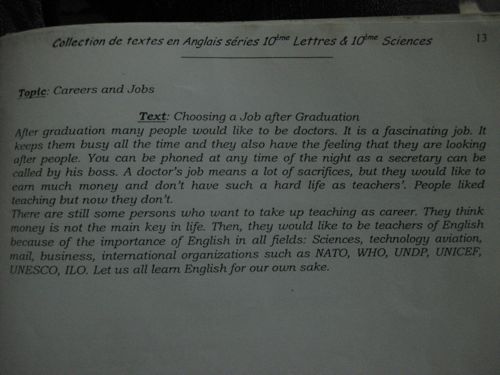In terms of actual project progress, we
have decided to postpone opening the library until next week for a
variety of reasons. The first was the practical concern of when the
furniture would be done and moved in and how quickly after that we
could have all of the books in place and the space decorated. I think
that the remarkable efficiency and transparency of the construction
process let us think that all aspects of the process would be so
easy. These practical concerns also coincide nicely with the fact
that next Sunday (or Monday, the calendar doesn't seem quite figured
out yet) is the major holiday Tabaski, so many students and teachers
will be traveling to join family, missing class for festival
preparations, etc. While we work on getting ready, I thought I'd
offer you some truly terrifying facts on education in Mali, in honor
of Halloween. All of this information comes from Oxfam's 2009 report
on “Delivering Education for all in Mali.” You can read the full
text here: http://www.oxfam.org/policy/delivering-education-for-all-mali
As of 2008:
-61% (only 53.9% of girls) of Mali's
children aged 7-12 are enrolled in primary school. These numbers are
better in Bamako, and worse in the rural regions. In the remote
northern region of Kidal, only 33% of girls attend primary school.
-In secondary school (children age
13-15), that enrollment figure falls to 7%. Less than 10% of the
children in the entire country are attending secondary school.
-The teacher to pupil ratio in primary
school is 1:51, 1:64 in public schools (though it often rises to
1:100 or even higher in rural areas). Picture a first grade class of
100 students on benches with no materials other than slates and
chalk. That's what our friend Robert's first grade class looked like.
-Mali's adult literacy rate is 23%, the
worst recorded in the world. The literacy rate for women is 16%. This
means that fewer than 1 in 4 adult Malians and fewer than 1 in 5
Malian women can read and write. The average adult literacy rate in
low-income countries is 60%.
- Just over 10% of Malian teachers
completed high school. 1 in 3 Malian teachers did not finish middle
school. Teacher training is typically one or two weeks long or
consists only of “on the job training” aka starting work.
-There are absolutely no requirements
or standards for teachers in private schools like the one where we
work. None.
-Public primary school principals
receive government grants amounting to between $0.50 and $1.00 per
student per year to pay for all books and materials. This means they
are often lucky to have enough chalk for the entire year, and maybe
books for all their teachers. Books for hundreds of students are
usually out of the question.
-Public school principals are paid
around $580 per month. Teachers get around $170. Teachers in
community schools get $50.
This list could literally go on for
pages. I encourage you to read the Oxfam report or other documents on
Malian education to get more information, but I would like to leave
you with this: these numbers are not abstract descriptions of vague
problems on the other side of the world. These are individual
children and teachers and parents who make up the future of a
country. This is an injustice. I cannot accept that in the same world
where I got a Scripps College education there are millions of girls
who never start first grade and those who do will go to schools where
there are no girls' bathrooms, where their teachers never finished
middle school, where there are 60 children in their class and no
books, and where they are unlikely to be able to read a single word
in their language of instruction in 2nd grade. Also, keep
in mind that this crisis perpetuates cycles of poverty, desperation,
and misinformation in a country where famine often looms and Al Qaeda
is recruiting. That is scary.
PS I hope you are all trick or treating
for UNICEF.









